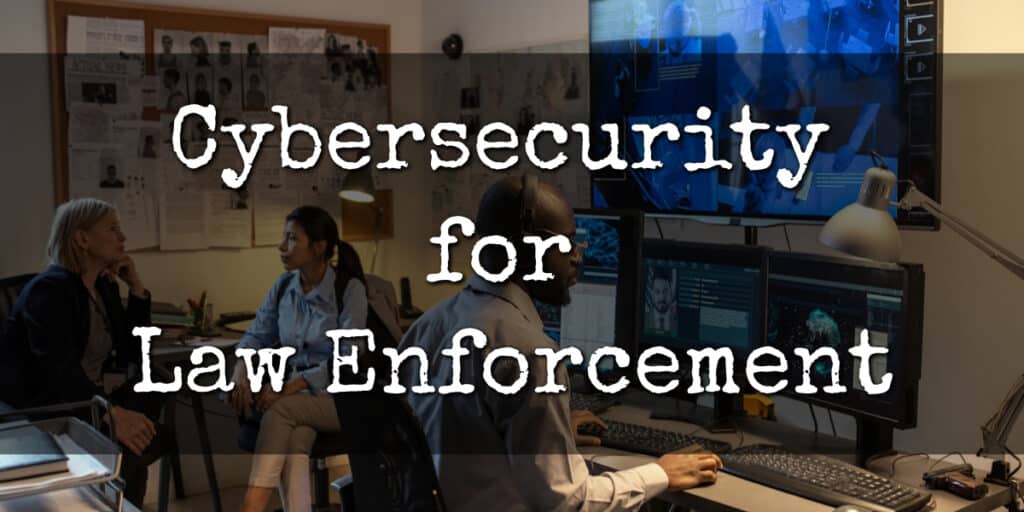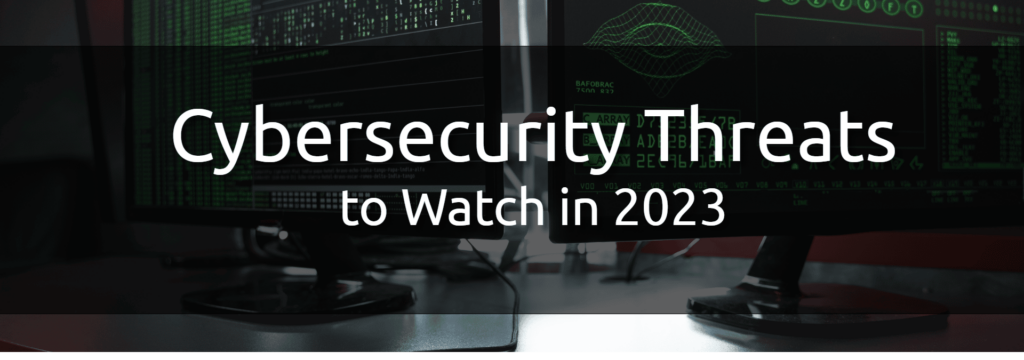Law enforcement agencies must develop robust cyber defense strategies in this era of relentless cyber threats. But how can these entities combat the ever-evolving landscape of cybercrime?
This article provides an in-depth analysis of cybersecurity for law enforcement, highlighting the unique challenges they face and suggesting best practices to bolster their defenses.
On This Page:
- Rising Cyber Threats: A Call to Action for Law Enforcement
- Local Law Enforcement: Unique Cybersecurity Challenges and Solutions
- Collaboration and Coordination: Strengthening Cyber Defense Through Unity
- Harnessing Technology: AI and Darknet Monitoring in Law Enforcement Cybersecurity
- Best Practices: Developing a Robust Cyber Defense Plan for Law Enforcement Organizations
- Summary
- Frequently Asked Questions
Key Takeaways
- Law enforcement agencies face an ever-increasing and diverse range of cyber threats, requiring proactive defense strategies.
- Local law enforcement must prioritize cybersecurity, allocate resources effectively and collaborate with other entities to address unique challenges.
- Best practices such as developing a cyber defense plan, continuous improvement & transparency should be adopted to protect digital assets & maintain national security.
Rising Cyber Threats: A Call to Action for Law Enforcement

The world has become increasingly dependent on technology, and with this dependency comes a growing number of cyber threats. Law enforcement agencies are no exception, as cybercriminals constantly attempt to steal sensitive data, commit identity theft, and disrupt operations. As cyber-attacks become more sophisticated, the need for robust cybersecurity measures has never been more crucial. The stakes are high – ensuring public safety and maintaining national security hinge on the ability of law enforcement agencies to protect their digital assets.
Not only are cyber threats becoming more advanced, but the motivation behind these attacks is also diverse. Cybercriminals target law enforcement agencies for financial gain and to disrupt operations. With new entry points, evolving tactics, and bad actors constantly looking for vulnerabilities, law enforcement organizations must adopt proactive defense strategies, including collaborating with international associations and organizations to better understand and combat these threats.
Identity and Data Theft: Cybercriminals’ Preferred Targets
Cybercriminals often target law enforcement agencies, including police officers, to gain access to sensitive data and personal information, which can result in data breaches, identity theft, and other crimes. The theft of personally identifiable information (PII) such as names, birthdays, and social security numbers can have devastating consequences for both law enforcement officers and the public they serve.
To protect against data theft and identity theft, law enforcement agencies must be diligent in safeguarding their digital assets. This includes implementing strong security practices like:
- Multifactor authentication (MFA)
- Being cautious when opening emails and verifying senders’ identities
- Avoiding watering hole attacks by refraining from downloading content from frequently visited websites.
Operational Disruptions: The Consequences of Cyberattacks on Law Enforcement
Cyberattacks on law enforcement agencies can have severe consequences, including:
- Disrupting operations
- Jeopardizing public safety
- Crippling essential applications
- Leaving law enforcement unable to access critical data
- Impeding their ability to respond to emergencies
The risk of operational disruption due to cyber incidents is only expected to increase. To mitigate this growing threat, law enforcement agencies must remain vigilant and invest in the necessary tools, training, and resources to stay ahead of cybercriminals and protect their operations.
Local Law Enforcement: Unique Cybersecurity Challenges and Solutions

Local law enforcement agencies face their own unique set of cybersecurity challenges. These challenges stem from limited resources, budget constraints, and the need for proper training and education. The scarcity of resources and personnel necessary to protect against cyber threats can lead to inadequate training and education, exacerbating the problem.
Addressing these challenges requires a multifaceted approach. Local law enforcement agencies must:
- Prioritize cybersecurity in their budget planning
- Allocate resources effectively
- Develop comprehensive training programs to ensure their personnel have the skills and knowledge needed to combat cyber threats
Furthermore, collaboration with other domestic and international agencies can provide valuable insights and assistance in tackling these unique challenges.
Limited Resources and Budget Constraints
Many local law enforcement agencies, including police departments, struggle with limited resources and budgets, making it difficult to implement effective cybersecurity measures. Reduced staffing levels and outdated technology can hinder their ability to prevent and respond to cybercrime.
To overcome these challenges, local law enforcement agencies must:
- Secure additional funding and resources, either through government grants or partnerships with private sector organizations
- Invest in the necessary technology, training, and personnel
- Better protect their digital assets and maintain the security of their systems
Training and Education
Proper training and education are crucial for law enforcement personnel to understand and respond to cyber threats effectively. A well-rounded curriculum combining classroom instruction with hands-on training can help officers stay current with cybersecurity threats and trends.
Local law enforcement agencies should prioritize ongoing training in cybersecurity best practices, ensuring their personnel are well-equipped to handle the ever-evolving landscape of cyber threats. Collaboration with other law enforcement agencies and private sector partners can also provide valuable opportunities for knowledge exchange and skills development.
Collaboration and Coordination: Strengthening Cyber Defense Through Unity

Collaboration between law enforcement agencies and other entities, such as Homeland Security, is essential for addressing cybersecurity challenges effectively. By leveraging the resources and capabilities of these organizations, local law enforcement agencies can significantly strengthen their cybersecurity posture and better protect their citizens.
In addition to Homeland Security, law enforcement agencies should collaborate with private sector organizations, international associations, and other government entities. This can help them access valuable expertise, resources, and tools, leading to a more robust response to cyber threats and improved public safety.
Information Sharing and Coordination

Information sharing and coordination between law enforcement agencies and Homeland Security can be vital in identifying and mitigating cyber threats. Organizations like the National Cybersecurity and Communications Integration Center (NCCIC) facilitate collaboration among:
- Government
- Private sector
- Law enforcement
- International partners
- Intelligence community partners
This collaboration helps to detect, prevent, respond to, and mitigate threats to U.S. cyber and communications systems.
Likewise, the Multi-State Information Sharing and Analysis Center (MS-ISAC) enhances the cybersecurity posture of state, local, tribal, and territorial (SLTT) governments through collaboration and information exchange with the Department of Homeland Security (DHS) and private sector partners.
By participating in these information-sharing initiatives, law enforcement agencies can stay updated on the latest cyber threats and improve their ability to respond effectively.
SLTT Law Enforcement Support
Support from state, local, tribal, and territorial (SLTT) entities can provide additional resources and expertise to law enforcement agencies in their fight against cybercrime. Financial assistance through grants and other funding opportunities can help these agencies prevent, protect against, and respond to potential threats and hazards.
By collaborating with SLTT entities, law enforcement agencies can access valuable resources, expertise, and funding, enabling them to address the growing cybercrime threat better. This support is crucial in helping these agencies maintain public safety and national security in an increasingly digital world.
Harnessing Technology: AI and Darknet Monitoring in Law Enforcement Cybersecurity

As cyber threats evolve, law enforcement agencies must leverage technology to combat cybercrime effectively. By utilizing advanced tools such as darknet monitoring, intelligence tools, and AI-powered forensic software, law enforcement can stay ahead of cybercriminals and protect their digital assets.
Embracing technology not only allows law enforcement agencies to better address cyber threats, but also enables them to adapt to the changing landscape of cybercrime. Staying at the forefront of technological advancements is crucial in maintaining public safety and ensuring the continued effectiveness of law enforcement agencies in the fight against cybercrime.
Darknet Monitoring and Intelligence
Monitoring the darknet and using intelligence tools can provide law enforcement with valuable insights into criminal activity online. By tracking illicit activities on the dark web and gathering open-source intelligence, law enforcement can identify potential risks and take appropriate action to prevent or mitigate these threats.
To stay ahead of cybercriminals, law enforcement agencies should:
- Develop robust darknet monitoring and intelligence capabilities
- Partner with other agencies and private sector organizations to share information and resources
- Invest in cutting-edge technology and training to ensure their personnel have the skills and knowledge to combat cybercrime effectively.
Artificial Intelligence and Forensic Software
AI-powered forensic software can significantly enhance the efficiency of cybercrime investigations by:
- Analyzing digital evidence more quickly and accurately than traditional methods
- Leveraging artificial intelligence to expedite the resolution of cybercrime cases
- Ensuring that justice is served swiftly
To fully harness the power of AI in forensic investigations, law enforcement agencies should invest in advanced AI-powered tools and provide ongoing training to their personnel. By staying up-to-date with the latest AI and forensic software developments, these agencies can improve their ability to combat cybercrime and maintain public safety.
Best Practices: Developing a Robust Cyber Defense Plan for Law Enforcement Organizations

Law enforcement agencies must adopt best practices for strengthening their cybersecurity defenses to address the growing cybercrime threat effectively. This includes:
- Developing a comprehensive cyber defense plan
- Embracing continuous improvement and transparency
- Conducting regular security risk assessments to identify potential vulnerabilities
By implementing these best practices, law enforcement agencies can:
- Protect their digital assets
- Foster trust and legitimacy with the public
- Maintain public safety
- Ensure national security
- Enhance the overall effectiveness of law enforcement agencies in an increasingly digital world.
A strong cybersecurity posture is critical in achieving these goals.
Developing a Comprehensive Cyber Defense Plan
A well-rounded cyber defense plan can help law enforcement agencies assess their needs, inventory current technologies, and allocate resources effectively. This plan should include evaluating computer systems and technologies such as:
- Firewalls
- Intrusion detection systems
- Antivirus software
- Encryption
- Authentication systems
These measures will ensure optimal security, similar to the efficiency of a secret service.
To develop a comprehensive cyber defense plan, law enforcement agencies should follow these steps:
- Conduct a security risk assessment to identify potential threats and vulnerabilities.
- Based on this assessment, establish security objectives.
- Ensure the confidentiality, integrity, and availability of data.
- Implement necessary security measures to protect against cyber threats.
Continuous Improvement and Transparency
Continuous improvement and transparency are essential for law enforcement agencies to stay proactive in addressing cyber threats and ensuring the security of their systems. Building trust and legitimacy with the public is crucial, and agencies can achieve this by engaging with the community, being open about their operations, and delivering clear and consistent communication.
Utilizing data to improve public safety and inform decision-making is another critical aspect of continuous improvement. Law enforcement agencies should:
- Analyze trends
- Recognize patterns
- Forecast potential threats
- Devise strategies to prevent and address cybercrime
Law enforcement agencies can maintain public trust and stay ahead of cyber threats by embracing continuous improvement and transparency.
Summary
In an increasingly digital world, law enforcement agencies face the daunting challenge of protecting their digital assets from ever-evolving cyber threats. To successfully combat cybercrime, agencies must adopt best practices, leverage technology, collaborate with other organizations, and ensure continuous improvement and transparency in their cybersecurity efforts.
By staying proactive and well-prepared, law enforcement agencies can maintain public safety and national security in the face of growing cyber threats.
Frequently Asked Questions
What is the role of law enforcement in cyber security?
Law enforcement plays an integral role in cyber security by investigating and prosecuting cybercriminals responsible for malicious activities such as theft, fraud, and exploitation of children.
These activities can have devastating consequences for victims, and law enforcement is tasked with bringing the perpetrators to justice. They use a variety of techniques to identify and track down cyber criminals, including digital forensics, intelligence gathering, and undercover operations.
What skills do law enforcement need to combat cyber crimes?
Law enforcement needs qualified specialists with detective and technical skills to combat cyber crimes, including knowledge of IT hardware and software, forensic tools, and network security expertise. To be successful in this field, criminal investigators must understand the technologies malicious actors are using and the specific vulnerabilities they are targeting.
How do police investigate cyber crimes?
Police investigate cyber crimes by following a seven-phase process, including initial investigation, information gathering and analysis, interviewing and interrogation, technical data systems review, forensic investigation, and case presentation in court.
Computer crime investigators use techniques such as recovering file systems, acquiring evidence to prosecute crimes, writing reports, and testifying in court hearings.
What is the cyber security compliance law?
Cybersecurity compliance refers to ensuring an organization adheres to industry regulations, standards, and information security and data privacy laws. The Federal Information Security Management Act (FISMA) controls the federal U.S. system to protect economic interest information, assets, and operations from the risk of breach, establishing risk-based controls that protect the confidentiality, integrity, and availability of information.



